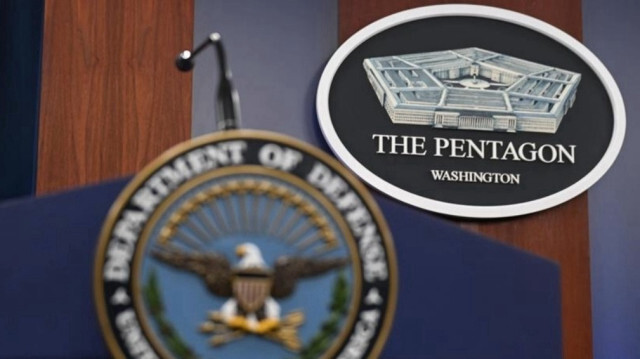US Military Unveils Gaza Aid Pier Amid Delays
In a significant humanitarian effort, the US military has announced the completion of a Gaza aid pier, but installation faces delays due to weather conditions.
Published May 09, 2024 - 00:05am

Image recovered from yenisafak.com
The US has finished constructing a significant piece of humanitarian infrastructure—a temporary floating pier—intended to facilitate aid delivery into the Gaza Strip amidst ongoing conflict and blockades. According to Pentagon Spokeswoman Sabrina Singh, the pier, comprising the Trident pier and floating pier sections, awaits deployment offshore due to adverse weather. High winds and swells continue to pose a safety risk, retaining the pier components at the Port of Ashdod.
Citing the strategic importance of the pier, US Central Command (CENTCOM) noted its readiness for imminent movement to the Gazan coast, which will serve as a vital maritime passageway for bringing essential supplies to the people affected by the devastation following the Israeli operations against Hamas. Despite completed construction work, the pier's capabilities have yet to be operationalized, with the Rafah crossing—previously a critical channel for aid—now seized by Israeli forces.
This pier project, with a budget of over $320 million, signifies the urgent response of the US military in establishing an emergency mission, a floating pier measuring 1,800-foot-long which pledges to deliver up to 2 million humanitarian aid meals per day once functional. While US troops are not expected to be involved on the ground, Israeli soldiers will anchor the pier to the shore, illustrating close military cooperation in this humanitarian mission.
The US commitment to alleviating Gaza's humanitarian crisis extends beyond the maritime aid corridor with CENTCOM conducting airdrops of Meal Ready To Eat military rations and Jordanian food supplies, totaling over 1,200 tons of distributed aid thus far. The poignant undertone to these relief efforts is the dramatic consequences of conflict, marked by the tragic loss of life following Hamas's October 7 attack on Israel and subsequent retaliatory operations.
The US has finished constructing a significant piece of humanitarian infrastructure—a temporary floating pier—intended to facilitate aid delivery into the Gaza Strip amidst ongoing conflict and blockades. According to Pentagon Spokeswoman Sabrina Singh, the pier, comprising the Trident pier and floating pier sections, awaits deployment offshore due to adverse weather. High winds and swells continue to pose a safety risk, retaining the pier components at the Port of Ashdod.
Citing the strategic importance of the pier, US Central Command (CENTCOM) noted its readiness for imminent movement to the Gazan coast, which will serve as a vital maritime passageway for bringing essential supplies to the people affected by the devastation following the Israeli operations against Hamas. Despite completed construction work, the pier's capabilities have yet to be operationalized, with the Rafah crossing—previously a critical channel for aid—now seized by Israeli forces.
This pier project, with a budget of over $320 million, signifies the urgent response of the US military in establishing an emergency mission, a floating pier measuring 1,800-foot-long which pledges to deliver up to 2 million humanitarian aid meals per day once functional. While US troops are not expected to be involved on the ground, Israeli soldiers will anchor the pier to the shore, illustrating close military cooperation in this humanitarian mission.
The US commitment to alleviating Gaza's humanitarian crisis extends beyond the maritime aid corridor with CENTCOM conducting airdrops of Meal Ready To Eat military rations and Jordanian food supplies, totaling over 1,200 tons of distributed aid thus far. The poignant undertone to these relief efforts is the dramatic consequences of conflict, marked by the tragic loss of life following Hamas's October 7 attack on Israel and subsequent retaliatory operations.
Efforts to mobilize international support have been ramped up, as the US coordinates with various governmental and non-governmental organizations. Logistical frameworks are being reinforced to ensure the efficient and secure passage of aid through the pier, which includes medical supplies, shelter materials, and fuel. These items are seen as crucial in re-establishing basic living conditions and stabilizing communities within Gaza that have been shattered by constant unrest.
Humanitarian groups have praised the construction of the floating pier as a breakthrough in aid delivery mechanisms, stressing that the ability to bypass conflict-ridden land routes could substantially increase the speed and volume of assistance reaching those in dire need. The complexities of land transport, combined with security concerns at border crossings, have historically made aid delivery to Gaza challenging. The underwater topography and maritime conditions are being meticulously studied to map out the safest and most effective positioning of the pier for maximum accessibility.
Political experts see this development as a tangible sign of the US's vested interest in the region's stability, potentially opening up new opportunities for diplomatic talks. The floating pier could also serve as a neutral zone for future peace negotiations, as it represents common humanitarian ground between conflicting parties. Although predominantly a military operation, the underlying objectives resonate with broader international peace-keeping efforts in the Middle East.
As part of ongoing surveillance, the US Navy along with international maritime authorities will monitor sea traffic and environmental conditions to safeguard operations once the pier is functional. These precautions are considered particularly important given the volatile history of Gaza's coastline, which has witnessed blockades and military action that have restricted sea access and compounded the humanitarian situation in the past.
The strategic placement of the floating pier in proximity to populated areas can potentially reduce the likelihood of interference by armed groups. However, military analysts warn that despite the humanitarian intent, the operation may attract opposition and could become a focal point for hostilities unless strictly managed and internationally recognized as a neutral entity. Plans for defense measures and quick-response protocols are being drawn up to address this concern.
International response to the US's initiative has varied, with key Middle Eastern and European stakeholders calling for transparency in the operation's management. Humanitarian access has often been mired by political agendas, and the introduction of this new channel for aid has sparked dialogue regarding the overseeing of such infrastructure and the fair distribution of the aid resources it will convey. The hope is that the pier will not only serve as a lifeline for Gazans but also as a beacon of cooperative humanitarian action among nations.
As all eyes turn towards the sea, waiting for weather conditions to permit the transfer of the pier to the Gazan coast, discussions continue on how to best utilize this platform for the larger goal of sustainable peace and recovery in the region. With the pier's operationalization on the horizon, the potential for it to alter the landscape of humanitarian aid in the Middle East remains a significant consideration for all parties involved.







